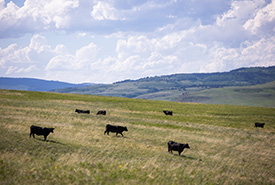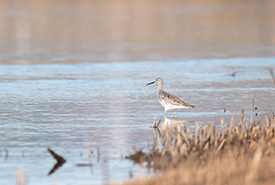Other Effective Area-based Conservation Measures

Cattle on working landscape, Alberta (Photo by Brent Calver)
In response to the dual crises of climate change and biodiversity loss, Canada has committed to protecting or conserving 30 per cent of the country’s lands and waters by 2030 (also known as 30 X 30). As a trusted delivery partner, the Nature Conservancy of Canada (NCC) is committed to working in collaboration with the Government of Canada and other partners to meet this target.
Success in reaching this target is going to take innovation and collaboration. And creating a representative and well-connected network of conserved lands will not be possible with protected areas alone. One emerging approach that complements continued protected area establishment is the recognition and support of other effective area-based conservation measures (or OECMs). Both protected areas and OECMs can contribute to Canada’s 30 X 30 target.
What are OECMs?
OECMs are areas that provide equivalent conservation benefits to protected areas but are not managed primarily for the conservation of nature. Like protected areas, OECMs can be governed by private individuals or organizations, Indigenous Peoples and local communities or governments. Examples could include areas of managed forest that are permanently set aside from commercial harvesting, protected municipal watershed areas or low-impact recreation lands.
Unlike protected areas, which are designated and managed specifically for conservation objectives, OECMs recognize areas where conservation outcomes occur as a by-product of management for other purposes. For example, a university may own and manage an area for biological and environmental research that, because of the way it is managed, also supports long-term biodiversity conservation.
While they operate in different contexts, the outcome of both OECMs and protected areas is the same: effective biodiversity conservation.
Importance

Barachois de Malbaie, QC (Photo by Daniel Thibault)
Alongside protected areas, OECMs support representative, well-connected networks of conservation. Recognizing areas as OECMs and including them in both national and global databases of protected and conserved areas reinforces their existing management and informs future land use and policy decisions.
OECMs support a whole-of-society approach to conservation and can facilitate collaboration across sectors to create resilient landscapes. OECMs also offer opportunities to link community economic prosperity with biodiversity conservation.
Incentives for OECMs are an emerging field in Canada. In December 2022, NCC brought global experts together at COP15 to explore financial solutions to incentivize OECMs.
For a full recording of the event, click here.
Canadian context
As of December 2023, Canada has protected or conserved 13.7 per cent of its terrestrial area (12.8 per cent as protected areas and 0.9 per cent as OECMs). Areas are screened for inclusion in this calculation based on nationally established criteria.




